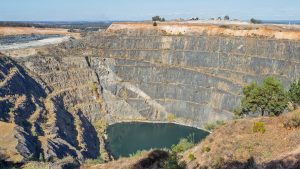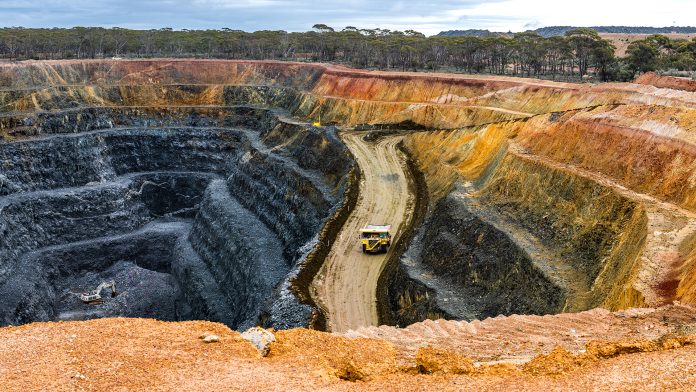As critical minerals surge in demand in line with the energy transition, the Chamber of Minerals and Energy (CME) of Western Australia discusses how Western Australia is accelerating its critical minerals sector.
In the same way that Western Australian iron ore has transformed our economy since the 1950s into the global export powerhouse it is today, the state’s supply of critical minerals is emerging as the next big opportunity for the resources sector.
The focus on critical minerals has steadily increased in the last decade due to the global mandate to reduce greenhouse gas emissions, as cemented by the Paris Agreement. Critical minerals are crucial inputs to a range of materials and technologies which are already playing a pivotal role in powering the global energy transition. As part of this shift to renewables, we are seeing a change in our everyday lives with more electric vehicles (EVs) on our roads, more solar panels on our roofs and more action by the world’s largest companies in adapting to new technologies to achieve their 2050 net-zero commitments.
But as the world transitions to cleaner energy technologies and electric vehicles become more prevalent and affordable, the demand for rare and critical minerals is only rising. According to the latest figures from the International Energy Agency (IEA), achieving net zero globally by 2050 will require at least six times more critical mineral inputs in 2040 compared to 2020, and a quadrupling of critical minerals inputs to clean energy technologies by 2040. Western Australia (WA), with its rich reserves of rare and critical minerals and reputation as a stable and attractive investment environment, is perfectly poised to take advantage of this boom – but our success is dependent on a number of factors.
Western Australia is already a critical minerals powerhouse
Western Australia is abundant in almost all the minerals on the Australian Government’s critical minerals list, including alumina, cobalt, lithium, graphite, magnesium, manganese, nickel, palladium, platinum group elements, rare earths, silicon, and vanadium. The state also hosts minerals such as copper and zinc, as well as other commodities that will support the global energy transition.
Recent capital investments exceeding A$9bn have brought about an iterative movement along the value chain beyond the export of raw materials to refined products. Western Australia is currently home to three lithium hydroxide facilities, a nickel sulphate refinery, a nickel and cobalt metals refinery, a silicon metal refinery, and a rare earths processing facility, with a rare earths refinery under construction and other minerals processing facilities planned or under development.
The state is also the world’s largest supplier of lithium; a global top five producer of class one nickel, rare earths and refined cobalt; and hosts Australia’s only silicon metal manufacturing operations.
There is an enormous opportunity for Western Australia to have a world-leading, sustainable, value-adding critical minerals sector. However, there is a narrow window of opportunity for Australia – and Western Australia – to capitalise on global critical minerals demand and unlock its potential as a major participant in the supply chain. And although the outlook is strong, the sector faces considerable challenges and headwinds.
The investment landscape is increasingly challenging
The development and processing of critical minerals requires enormous capital investment. Assets are frequently developed by junior and mid-tier companies that require access to external capital. However, financing can be difficult as investors consider risks related to the volatility and transparency of critical minerals markets.
This results in developers in the critical minerals sector negotiating raw material offtake deals to foreign processors in exchange for project funding. This trend risks perpetuating a cycle of offshoring segments of the value chain and inhibiting Australia’s ability to value-add domestically.
Western Australia is a high-cost environment relative to its competitors and faces higher costs associated with labour, land, transport, tax, foreign investment fees, and regulatory burden.
Processing infrastructure typically requires upwards of $2bn in capital investment and, unlike competitor jurisdictions, it can be difficult to access suitable ‘turnkey’ ready land with available access to adequate services, chemical inputs, transport logistics and port throughput capacity – in a global context, it can be more attractive to invest elsewhere.
There is an urgent need to incentivise investment within Australia to attract capital that is otherwise flowing to jurisdictions that have established significant investment incentives to attract increasingly mobile global capital.
For example, initiatives like the Inflation Reduction Act (IRA) that is designed to enhance the United States’ critical minerals supply chain capabilities and downstream industry totals $700bn. This unprecedented market intervention has already drawn global investment capital from other jurisdictions and presents a major challenge to realising domestic downstream investment.

Western Australia is the world’s largest supplier of lithium
Focusing the policy effort on areas of competitive strength
In the case of lithium-ion batteries, technology learning and economies of scale have seen global overall costs decline by 90% over the past decade. This means that raw material costs now loom larger in the overall cost structure, accounting for between 50-70% of total battery costs, up from 40-50% five years ago.
Australia is one of the world’s most competitive upstream producers of critical and battery minerals globally – a factor that will continue to increase in importance to Australia’s trade partners.
The ability to capitalise on the opportunities presented through trade partner incentives, and optimise the share of economic value captured domestically, relies on a continued commitment to sustainable and competitive upstream raw materials production.
Similarly, the opportunity to create tangible opportunities for critical minerals producers from the numerous bilateral and multilateral agreements that Australia is a party to relies on a continued commitment by the government to identify and communicate specific market opportunities to the critical minerals sector.
Approval complexity, timeframes, and costs are a significant impediment
Inefficient, costly, and duplicative assessment and approvals processes continue to contribute to delays and increase the cost of Australian critical minerals projects. That is not to in any way imply that our standards, such as those required for environmental approvals, are not appropriate. The sector is steadfast in its commitment to meeting government and community expectations for the responsible development of our mineral resources.
However, approvals processes can take 10-15 years from exploration to the mining stage of development, with environmental approvals processes typically consuming three to five years of this (compared to a matter of months in competitor jurisdictions). The cumulative effect of these drawn-out timeframes risks creating a disincentive to investment, preventing the sector from realising its potential, and substantially contributing to global decarbonisation.
Ultimately, the persistence of cumbersome, inefficient, and costly regulatory processes will inhibit the industry’s ability to ramp up production and capitalise on heightened global demand for critical minerals as a result. There is a significant opportunity to streamline approvals processes at both federal and state levels to enable new project development and brownfields expansions, including for projects already in the pipeline.
Collaboration between federal and state government agencies and enhanced project facilitation is required to accelerate approvals processes for projects that are in the national interest.
Urgent action is needed on energy
Investment in clean energy generation, storage and transmission capacity is required at scale.
Rapidly increasing global climate ambitions have resulted in several international jurisdictions mandating environmental, social, and governance (ESG) provenance requirements for critical mineral inputs to advanced manufacturing products. For the resources sector, the task of decarbonising existing operations will lead to a significant increase in demand on electricity networks.
CME estimates that the South-West Interconnected System, for example, will need more than twice its current capacity. Likewise, any new projects, such as the processing and refining of critical minerals, will need access to a reliable, affordable supply of clean energy to power heavy (and energy intensive) industrial processes.
A once-in-a-generation transformation of our electricity networks is required to meet this demand, to ensure we have a sufficient supply of clean energy, particularly to support the electrification of industrial processes, and to enable grid-connected companies to achieve net-zero commitments. But also to ensure we maintain a competitive edge to attract and secure investments in new projects, including securing more projects along the critical minerals value chain.
The challenges of multi-year approvals processes extend to our electricity transformation challenge and make it even more urgent that we invest in the generation, transmission and storage components of both public and private networks to ensure a managed and timely transition.
Our state is always stronger when industry and government work constructively together
Australian governments recognise the vast and lucrative opportunities inherent in Australia’s critical minerals sector – and how essential they are to delivering on global net-zero commitments.
Since releasing its Future Battery Industry Strategy in January 2019, the WA Government has worked alongside industry to implement its vision for our state’s future battery and critical minerals sector – and recently committed to the investment of a further $40m to accelerate critical minerals discoveries.
Similarly, the Albanese Government consulted earlier this year on its new critical minerals strategy and is now waiting for its finalisation and release to accelerate Australia’s role in the global market – signing a joint Declaration of Intent with Germany in March this year, the same month they committed to deepening co-operation and extending commitments to the Australia-India Critical Minerals Investment Partnership.
In the first quarter of 2023, federal, state and territory resources and mining ministers agreed to co-ordinate efforts to support the development of Australia’s critical minerals sector – recognising the development of the sector as a national priority.
To realise shared State and Commonwealth critical minerals ambitions, it will be important to focus policy efforts on areas of competitive strength – to ensure we continue to capitalise on our advantages, including in upstream raw material extraction – while addressing challenges which may inhibit further developments along the value chain.
While Western Australia is a tier-one mining jurisdiction, it is also a high-cost environment. State and federal policy initiatives supporting the development of the sector will need a ramping-up in order to compete with international players.
The CME and its member companies are applying urgency and collaboration in their partnership with the government and key stakeholders, to ensure that Western Australia remains an attractive investment jurisdiction that fosters the ongoing expansion of the critical minerals sector through encouraging exploration, supporting project commitments and putting in place the settings which will enable the continual development down the value chain towards downstream processing, alongside the integration of new, innovative, net-zero emission technologies across our mine sites.
Please note, this article will also appear in the fourteenth edition of our quarterly publication.









